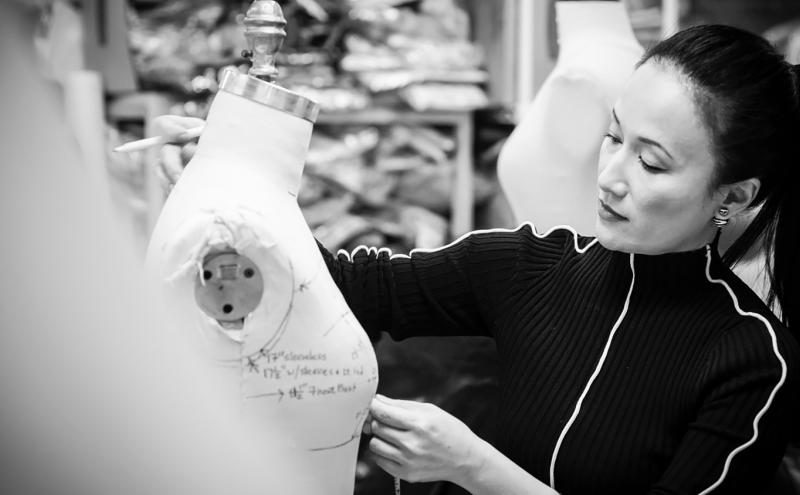
Pike Place Market is one of Seattle’s most iconic landmarks and a huge part of its story. The Market has also been a part of Jaison Scott’s story for as long as he can remember. He grew up running and playing through the Market with other Market kids while his mom worked in various stands.
The Pike Place Market is one of the oldest and largest continuously operating public markets in the United States and draws a mix of locals and tourists to shop, eat, and explore.
Today, the Market remains a central part of Scott’s life. He has worked at the famous Pike Place Fish Market (located right in the middle of the public market, by Rachel, the big bronze pig) for over 30 years. Five years ago he took over as co-owner, along with three other longstanding employees, Sam Samson, Anders Miller, and Ryan Reese.
“We’re a great team of people that want to sell the best fish and create a great experience for customers or people visiting the Market from all over the world,” he said.
Scott and the other fishmongers at Pike Place Fish Market are the unofficial ambassadors of Seattle; news and sports channels go straight to the Fish Market when they are looking to film quintessential Seattle scenes for their newscast. But Scott is quick to remind people that the Fish Market is just a slice of the vibrant energy that Pike Place Market brings to Seattle.
“The whole Market is super important to Seattle,” he said. “We want to support all our neighbors and make sure the Market is healthy.”
Cruising for fish
Each year as cruise season sets sail beginning in April, Scott and fellow Market vendors see an influx of tourists and the corridors and shops are thick with people from all over the world. Cruise customers make up a large chunk of business during summer months.
The 2023 Seattle cruise season is expected to be the biggest season ever, welcoming 290 sailings and over 1.4 million revenue passengers between April and October. Many cruise passengers spend some time before or after their cruise exploring Seattle and the region and supporting local businesses. Overall, cruising from Seattle supports nearly $900 million a year in local economic activity and approximately 5,500 local jobs.
 The iconic stop in the Market draws a mix of tourists and locals for its sustainable, high-quality seafood, mostly sourced regionally and from Alaska. The biggest sellers are Dungeness and king crab, salmon, halibut, and smoked salmon.
The iconic stop in the Market draws a mix of tourists and locals for its sustainable, high-quality seafood, mostly sourced regionally and from Alaska. The biggest sellers are Dungeness and king crab, salmon, halibut, and smoked salmon.
In the winter, 80% of Pike Place Fish Market business comes from online or phone sales and 20% from over-the-counter sales. During summer months, 80% of business comes from tourists visiting the market location or ordering when they get home. Cruise passengers make up 40% of that number.
Scott said that many customers are inspired to buy regionally sourced, sustainable seafood after taking an Alaska cruise and participating in nature-based excursions like whale watching or a fishing trip.
Pike Place Fish Market signage caters to these experiences with phrases like ‘You are standing in front of 1,000 pounds of beautiful, regionally sourced salmon.’ Scott and his team also try to help visitors understand the importance of eating sustainable seafood and why it costs more than the farm-raised seafood they may be used to.
A great catch
People can’t help but stop what they are doing when they come across the flying fish and boisterous sounds in the vicinity of Pike Place Fish Market.
“It’s a fun, crazy environment,” Scott said. “You have guys throwing fish around and yelling. People want to stop and find out what’s going on. It’s not something you see every day. We are a fish market. You buy and take fish home and cook it. We’re high energy. People stand for hours just watching us; they find it fascinating, like live theater. We cut the fish in front of them too and people can see that.”
The now-famous practice of throwing fish at Pike Place Fish Market was started by the previous owner, Johnny Yokoyama, out of convenience and efficiency. Little did he know the move would spark a legendary tradition drawing people near and far.
Here's how it started. A customer ordered a bag of clams. After a long day, Yokoyama was tired of making the trip back and forth between the counter and the stand to weigh the seafood. On a whim, he threw the bag to his colleague and the rest is history.
“It saves steps and it’s more efficient,” Scott said. “Johnny started having fun with it, calling out what the customer bought and their name, and cutting and packing instructions. He started looking for ways to make it more engaging and a creative space.”
The fish-throwing element can take some getting used to for someone new on the job, but it comes with the territory.
“If you have a $1200 Copper River king salmon, you don’t want to drop that,” he said. “You want to treat it well and appreciate the hard work it takes to get the fish. There’s nothing compared to that.”










